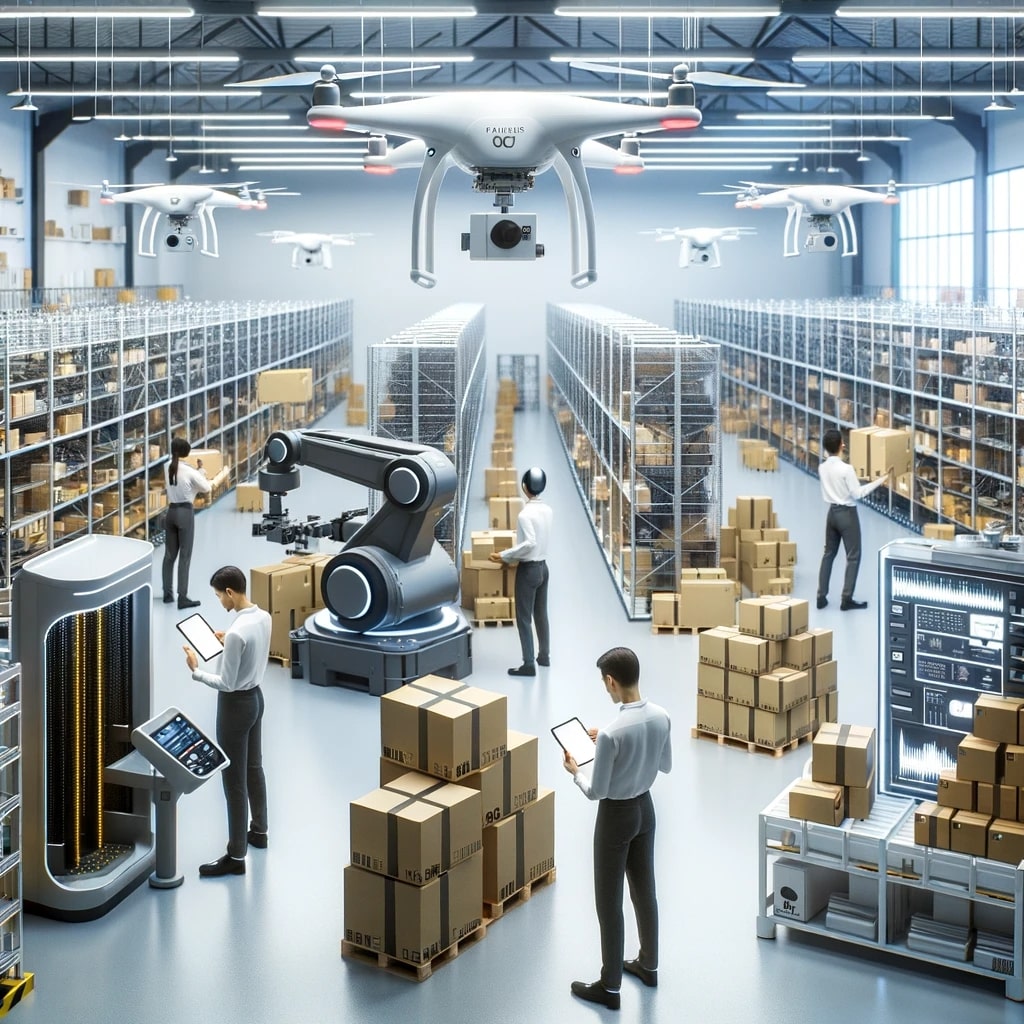
The ecommerce industry, which involves the process of buying and selling goods and services online, has revolutionized the way we shop and conduct business. Ecommerce sales have seen significant growth in recent years, and it is expected to continue to be a major player in the future ecommerce trends. With ecommerce, consumers have the convenience of purchasing products from the comfort of their own homes. With advancements in technology, the future of the ecommerce industry and ecommerce business is promising. The growth of online retail, including mobile commerce, has been unstoppable. This transformation has created a convenient, accessible, and global marketplace for consumers and businesses alike, driving commerce growth for online merchants and online retailers. Additionally, the rise of mobile commerce has further expanded the reach and opportunities for businesses in the digital marketplace.
The future ecommerce trends have a significant impact on consumer behavior and the business strategies of online retailers and online merchants, ultimately shaping the retail sales landscape. Ecommerce trends have reshaped the way we market, advertise, and sell products in the ecommerce business. It has greatly impacted sales and also brought about the rise of mobile commerce. The ecommerce industry continues to evolve rapidly, driven by changing consumer demands and advancements in technology. With the latest ecommerce trends shaping the market, businesses need to stay updated to boost their sales. As a result, businesses must adapt to stay relevant in the ecommerce and mobile commerce market. This ever-changing digital landscape requires businesses to adjust their strategies to drive sales.
From emerging trends to innovative technologies, we will uncover what’s next in the world of ecommerce business and online commerce.
Understanding the Past: The Growth of Online Shopping
The evolution of the ecommerce business has been a remarkable journey, with online shopping experiencing exponential growth over the years. As more and more people in the US gained access to the internet, the convenience and accessibility of ecommerce shopping from the comfort of one’s own home became increasingly appealing. The rise of mobile commerce further enhanced this trend.

One significant factor that contributed to the growth of ecommerce in the US was the introduction of secure payment systems. In the early days of ecommerce, many consumers were hesitant to make purchases online due to concerns about fraud and identity theft. However, as technology advanced and secure payment methods such as encrypted transactions and buyer protection programs became prevalent, consumer confidence in ecommerce soared.
Another game-changer in the world of ecommerce was the rise of online marketplaces like Amazon. These ecommerce platforms revolutionized online retail by offering a vast array of products all in one place. Ecommerce shoppers no longer had to visit multiple ecommerce websites or physical stores to find what they needed; instead, they could browse through thousands of ecommerce options on a single ecommerce platform. This convenience factor played a significant role in attracting more consumers to shop online, especially in the ecommerce industry.
The advent of mobile devices also played a crucial role in driving the growth of ecommerce and online shopping. With smartphones becoming an integral part of our daily lives, ecommerce it became easier than ever for consumers to make purchases on-the-go. Mobile apps in ecommerce provide seamless experiences tailored specifically for smaller screens, making it convenient for users to browse products and complete transactions anytime, anywhere.
In recent years, there has been a surge in ecommerce sales driven by changing consumer behavior and external circumstances such as the COVID-19 pandemic. The pandemic accelerated the shift towards ecommerce as physical stores temporarily closed their doors and consumers turned to online platforms for their shopping needs. This unprecedented situation highlighted the importance and resilience of ecommerce in meeting consumer demands even during challenging times.
Looking ahead, what can we expect for the future of ecommerce? As technology continues to advance at a rapid pace, we can anticipate further innovations in ecommerce and online shopping experiences. Virtual reality (VR) and augmented reality (AR) technologies have the potential to revolutionize ecommerce, transforming the way we shop online. These immersive and interactive experiences bridge the gap between physical and digital retail, enhancing the overall shopping experience.
Furthermore, personalization will play a crucial role in shaping the future of ecommerce. With advancements in data analytics and artificial intelligence, ecommerce retailers will be able to offer highly tailored recommendations and personalized shopping experiences based on individual preferences and browsing history.
Current State of E-commerce: Trends and Innovations

Mobile Commerce: Shopping on the Go
Mobile ecommerce, or m-commerce, is experiencing a significant surge in popularity. More and more consumers are turning to their smartphones for ecommerce purchases. With the convenience of ecommerce mobile apps and responsive websites, people can shop for products anytime, anywhere. This ecommerce trend has been fueled by advancements in technology and improved internet connectivity.
Pros:
-
Ecommerce Convenience: Shoppers can browse and buy ecommerce products with just a few taps on their mobile devices.
-
M-commerce, also known as ecommerce, enables individuals in remote areas to access a wide range of products without the need for physical stores.
-
Personalization: Ecommerce retailers can leverage data from mobile transactions to offer personalized recommendations, enhancing the ecommerce shopping experience.
Cons:
-
Limited screen size is a common challenge in ecommerce due to the smaller screens of smartphones.
-
Ecommerce Security Concerns: As with any ecommerce transaction, there is always a risk of data breaches or fraudulent activities. It’s crucial for consumers to practice safe browsing habits when engaging in ecommerce and choose reputable platforms.
Social Media as an E-commerce Driver
Social media platforms have evolved beyond being mere communication tools; they now play a pivotal role in driving ecommerce sales. Through targeted advertising, ecommerce businesses can reach their desired audience directly on ecommerce platforms like Facebook, Instagram, and Pinterest. These visually appealing ecommerce ads seamlessly blend into users’ feeds, catching their attention and enticing them to make a purchase.
Pros:
-
Highly Targeted Advertising: By leveraging user data such as demographics, interests, and browsing behavior, ecommerce businesses can create highly targeted ads that resonate with their ideal customers.
-
Influencer Marketing: Collaborating with ecommerce influencers who have a large following on social media allows ecommerce brands to tap into new markets and gain credibility among their target audience.
-
Encouraging customers to share their experiences through reviews or user-generated content is crucial for building trust and social proof in the ecommerce industry.
Cons:
-
Excessive advertising on social media platforms can lead to ad fatigue among ecommerce users, causing them to ignore or block ads altogether.
-
Influencer Marketing and Ecommerce: Inauthenticity Concerns in Sponsored Content In the world of ecommerce, some consumers may have concerns about the authenticity of recommendations made by influencers in sponsored content.
-
Privacy Concerns in Ecommerce: The collection and use of user data for targeted advertising purposes in the ecommerce industry have raised privacy concerns. In the world of ecommerce, it is crucial for businesses to handle user data responsibly and transparently.
Voice Search Technology: Hands-Free Shopping
Voice search technology has gained significant traction in recent years, revolutionizing the way people interact with their devices, including ecommerce. With the rise of virtual assistants like Siri, Alexa, and Google Assistant, ecommerce users can now make hands-free purchases using voice commands. This innovation has streamlined the shopping experience for busy individuals who are constantly on the move.
Pros:
-
Convenience and Speed: Voice search eliminates the need for typing or navigating through menus, making it faster and more convenient for users to find and purchase products.
-
Accessibility: Voice-enabled devices cater to individuals with physical disabilities or those who struggle with traditional typing methods.
-
Multi-tasking Capability: Users can perform other tasks simultaneously while making a purchase through voice commands, enhancing productivity.
Cons:
-
Accuracy Challenges: Voice recognition technology is not flawless and may sometimes misinterpret commands or struggle with accents or dialects.
-
Limited Visual Feedback: Unlike traditional online shopping experiences that offer visual product images and detailed descriptions, voice-only interactions lack visual feedback, potentially impacting buying decisions.
-
Privacy Concerns: As with any voice-enabled device, there are concerns about privacy breaches and unauthorized access to personal information. It is crucial for users to understand the privacy settings associated with these devices.
Subscription-based Models and Personalized Recommendations
To enhance customer loyalty and drive repeat purchases, many e-commerce businesses have adopted subscription-based models. These models offer customers a curated selection of products based on their preferences through personalized recommendations. By tailoring the shopping experience to individual needs and preferences, businesses can foster long-term customer relationships.
The Future of E-commerce: Predictions and Insights
Artificial Intelligence (AI) is set to revolutionize the e-commerce industry, improving customer experience and streamlining operations. With AI-powered chatbots, businesses can provide instant support and personalized recommendations, enhancing customer satisfaction. AI algorithms can analyze vast amounts of data to understand consumer behavior and preferences, enabling companies to offer targeted marketing campaigns.
Virtual reality (VR) and augmented reality (AR) are poised to transform the way consumers shop online. By providing immersive experiences, these technologies allow customers to virtually try on clothes, visualize furniture in their homes, or even test drive vehicles before making a purchase. This not only enhances the shopping experience but also reduces the likelihood of returns due to mismatched expectations.
Blockchain technology offers enhanced security and transparency in e-commerce transactions. By creating a decentralized ledger system, blockchain eliminates the need for intermediaries, reducing costs and increasing trust between buyers and sellers. Moreover, it enables real-time tracking of products throughout the supply chain, ensuring authenticity and preventing counterfeit goods from entering the market.
Voice commerce is expected to witness significant growth as voice assistants become more sophisticated. With devices like Amazon Echo and Google Home becoming increasingly popular, consumers can now make purchases using voice commands. This hands-free approach simplifies the shopping process for busy individuals while opening up new opportunities for businesses to engage with customers through voice-activated promotions.
The future of e-commerce will also see advancements in delivery methods. Drone delivery services are already being tested by companies like Amazon, promising faster shipping times and reduced costs. Autonomous vehicles may soon be deployed for last-mile deliveries, further optimizing logistics operations.
As retail sales continue to shift towards online platforms, personalization will remain a key focus for e-commerce businesses. Machine learning algorithms will enable companies to analyze customer data in real-time and deliver highly tailored product recommendations based on individual preferences and browsing history.
Another trend that will shape the future of e-commerce is social commerce. With the rise of social media platforms, businesses can directly sell products through integrated shopping features. This seamless integration between social media and e-commerce allows customers to discover and purchase products without leaving their favorite platforms.
Augmented Reality in E-commerce: Enhancing the Shopping Experience
Augmented reality (AR) has revolutionized the way we shop online, providing an immersive and interactive experience for customers. With AR technology, shoppers can now visualize products before making a purchase decision, eliminating uncertainties and enhancing their overall shopping experience.
Visualizing Products with AR
One of the key benefits of augmented reality in e-commerce is its ability to allow customers to visualize products in a virtual environment. By using their mobile devices or other compatible devices, shoppers can see how a product would look or fit in their own space before buying it. For example, if you’re considering purchasing furniture, you can use an AR app to place virtual furniture in your living room and see how it complements your existing decor.
Virtual Try-On Experiences
Another exciting application of AR in e-commerce is virtual try-on experiences. This technology enables customers to virtually try on clothing, accessories, and even makeup without physically being present at a store. By leveraging AR-powered apps or websites, shoppers can see themselves wearing different outfits or experimenting with various styles.
The virtual try-on experience not only saves time but also reduces the hassle of returning items that don’t fit properly. It increases customer satisfaction by allowing them to make confident purchase decisions based on how the product looks on them virtually.
Interactive Product Demonstrations
Brands are harnessing the power of augmented reality to create interactive product demonstrations that engage shoppers effectively. Instead of relying solely on static images or videos, brands can now offer dynamic and immersive experiences through AR technology.
For instance, imagine wanting to buy a new gaming console. With AR-enabled apps or websites, you could project a life-size 3D model of the console into your living room and explore its features from every angle. You could even interact with the virtual console as if it were right there in front of you.
This level of interactivity helps customers gain a better understanding of the product’s functionality, design, and features. It enhances their confidence in making informed purchase decisions.
AR technology is continually evolving, and its potential applications in e-commerce are expanding rapidly. As we move further into the metaverse era, where virtual and physical realities converge, AR will play an even more significant role in shaping the future of online shopping.
Embracing Automation: Streamlining Operations in E-commerce
Automation has become a game-changer in the world of e-commerce, revolutionizing the way businesses operate and enhancing overall efficiency. With the continuous advancements in technology, embracing automation has become crucial for staying competitive in the ever-evolving e-commerce landscape.
Efficient Customer Service with Chatbots
One of the key areas where automation has made a significant impact is customer service. Chatbots, powered by artificial intelligence (AI), have emerged as valuable tools for handling customer inquiries efficiently. These intelligent bots can provide instant responses to frequently asked questions, offer personalized recommendations, and even process orders seamlessly. By leveraging chatbots, businesses can provide round-the-clock support to their customers without requiring human intervention.
Speed and Accuracy through Warehouse Automation
Another area where automation has transformed e-commerce operations is order fulfillment. Warehouse automation technologies have enabled businesses to streamline their processes and improve speed and accuracy in fulfilling customer orders. Automated systems can handle tasks such as picking and packing products, reducing human errors and increasing efficiency. With automated warehouse solutions, businesses can fulfill orders faster while maintaining high levels of accuracy.
Optimized Inventory Management Systems
Effective inventory management is vital for any e-commerce business. Automated inventory management systems play a crucial role in preventing stockouts and optimizing supply chain processes. These systems use real-time data to track inventory levels accurately, enabling businesses to make informed decisions about restocking products efficiently. By automating inventory management, businesses can minimize the risk of overselling or running out of stock, ensuring seamless operations and satisfied customers.
Integration across Multiple Channels
In today’s omnichannel retail environment, integrating various platforms and channels is essential for providing a seamless shopping experience. Automation enables businesses to integrate their online stores with marketplaces like Amazon or eBay effortlessly. This integration allows for centralized order management, inventory synchronization, and streamlined shipping processes across multiple sales channels. By automating these integrations, businesses can save time and effort while expanding their reach to a broader customer base.
Subscription Services and Packaging Automation
Subscription services have gained immense popularity in recent years. Automation plays a crucial role in managing these recurring orders efficiently. By automating subscription services, businesses can handle recurring payments, manage inventory for subscription products, and ensure timely deliveries. Packaging automation technologies enable businesses to optimize the packaging process, reducing waste and improving efficiency.
Embracing automation in e-commerce offers numerous benefits, including improved customer service, streamlined operations, enhanced inventory management, and seamless integration across multiple channels. As technology continues to advance rapidly, it is essential for businesses to stay ahead of the curve by leveraging automation tools that align with their specific needs.
Personalization and Customer Experience: Driving Success in Online Businesses
In the fast-paced world of e-commerce, personalization and customer experience play a crucial role in driving success for online businesses. By tailoring the shopping experience to individual customers, businesses can increase conversion rates, build customer loyalty, and foster long-term success.
Personalized product recommendations based on user behavior increase conversion rates.
One of the key aspects of personalization is providing customers with tailored product recommendations based on their browsing and purchasing history. By analyzing user behavior data, businesses can understand their customers’ preferences and offer relevant suggestions that align with their interests. This personalized approach not only enhances the shopping experience but also increases the likelihood of conversions. When customers feel that a business understands their needs and preferences, they are more likely to make a purchase.
Pros:
-
Increases conversion rates by offering relevant product suggestions.
-
Enhances customer satisfaction by catering to individual preferences.
-
Boosts revenue through increased sales.
Cons:
-
Requires robust data analysis capabilities to accurately personalize recommendations.
-
Privacy concerns may arise if customers feel their data is being used without consent or transparency.
Chatbots with natural language processing provide personalized customer support.
Another way to enhance personalization is through the use of chatbots equipped with natural language processing (NLP) capabilities. These AI-powered virtual assistants can engage with customers in real-time, providing personalized support and assistance throughout their shopping journey. By understanding customer queries and responding in a human-like manner, chatbots create a seamless customer experience while reducing response times. They can help answer questions about products, provide recommendations, assist with order tracking, and even handle returns or exchanges.
Pros:
-
Offers round-the-clock customer support without requiring human intervention.
-
Provides instant responses to customer inquiries, improving satisfaction levels.
-
Reduces operational costs by automating repetitive tasks.
Cons:
-
May lack the human touch and empathy that some customers desire.
-
Complex queries or unique situations may require human intervention.
Creating seamless omnichannel experiences enhances customer satisfaction and loyalty.
In today’s digital landscape, customers interact with businesses through various channels such as websites, mobile apps, social media platforms, and physical stores. Creating a seamless omnichannel experience is essential for businesses to meet customer expectations and drive success. By integrating these channels and ensuring consistency across all touchpoints, businesses can provide a cohesive and personalized experience. For example, customers can start browsing products on a website, add items to their cart via a mobile app, and complete the purchase in-store without any friction.
Pros:
-
Increases customer satisfaction by providing a consistent experience across channels.
-
Enhances brand loyalty as customers feel connected to the business at every touchpoint.
-
Enables businesses to capture valuable data on consumer behavior across multiple channels.
Cons:
-
Requires robust technological infrastructure and integration capabilities.
-
Inconsistencies in messaging or user experience across channels can lead to confusion.
User-generated content and reviews build trust and credibility for online businesses.
Customers often rely on the opinions of others. User-generated content (UGC) such as reviews, ratings, testimonials, and social media posts can significantly influence consumer behavior. By encouraging customers to share their experiences with products or services, businesses can build trust and credibility. Positive UGC acts as social proof for potential buyers while negative feedback provides an opportunity for businesses to address concerns proactively.
Pros:
-
Builds trust among potential customers through authentic user experiences.
-
Influences purchasing decisions by providing insights from real users.
-
Encourages engagement with the brand through active participation from customers.
Cons:
-
Negative reviews or feedback can harm reputation if not addressed appropriately.
-
Businesses need strategies in place to encourage users to generate content.
The Way Forward for E-commerce
Congratulations! You’ve journeyed through the evolution of e-commerce, exploring its past, present, and future. We’ve uncovered the remarkable growth of online shopping, delved into the latest trends and innovations shaping the industry today, and peered into the crystal ball to predict what lies ahead. But what does all this mean for you as a consumer or business owner?
The future of e-commerce is brimming with possibilities. As technology continues to advance at lightning speed, we find ourselves on the cusp of an exciting era where augmented reality enhances our shopping experiences, automation streamlines operations, and personalization drives success in online businesses. It’s time for you to seize these opportunities and embrace the changing landscape.
So here’s your call-to-action: whether you’re a shopper or an entrepreneur, take advantage of these emerging trends and insights to stay ahead in the world of e-commerce. Embrace new technologies that enhance your experience as a customer or unlock untapped potential as a business owner. Adaptability is key – don’t be afraid to experiment and evolve with the times. The future is yours to shape!
FAQs
How can I ensure a secure online shopping experience?
Online security is crucial. To protect yourself while shopping online, make sure to:
-
Shop from reputable websites
-
Look for secure payment options (e.g., SSL encryption)
-
Use strong passwords and enable two-factor authentication
-
Keep your devices updated with the latest security patches
-
Be cautious about sharing personal information
How can I find trustworthy online sellers?
Finding trustworthy sellers in the vast realm of e-commerce can be daunting but not impossible. Here are some tips:
-
Read customer reviews and ratings
-
Check if they have clear return policies and customer support channels
-
Look for certifications or trust seals (e.g., BBB Accredited Business)
-
Research the company’s reputation and history
-
Trust your instincts and avoid deals that seem too good to be true
What are some upcoming e-commerce trends I should watch out for?
Keep an eye out for these exciting e-commerce trends on the horizon:
-
Voice commerce: Shopping through voice assistants like Alexa or Siri
-
Social commerce: Buying directly from social media platforms
-
Sustainable shopping: Increased focus on eco-friendly products and practices
-
Mobile commerce: Continued growth of mobile shopping experiences
-
Subscription-based models: Personalized recurring purchases tailored to your preferences
How can I optimize my online store for better conversion rates?
To improve your online store’s conversion rates, consider these strategies:
-
Optimize website speed and performance
-
Simplify the checkout process with fewer steps
-
Offer multiple payment options to cater to different preferences
-
Provide detailed product descriptions and high-quality images/videos
-
Implement customer reviews and testimonials to build trust
What role will artificial intelligence play in e-commerce?
Artificial intelligence (AI) is set to revolutionize e-commerce by enhancing personalization, improving search capabilities, and enabling chatbots for customer support. AI-powered recommendation systems will help tailor product suggestions based on individual preferences, while intelligent chatbots can provide instant assistance. As AI continues to evolve, it will undoubtedly shape the future of e-commerce in remarkable ways.
Remember, as you navigate the ever-changing world of e-commerce, stay curious, adaptable, and open-minded. Embrace the advancements that make shopping more convenient and enjoyable while being mindful of security measures. With a little know-how and a willingness to explore new horizons, you’re well-equipped to thrive in this exciting digital realm!


